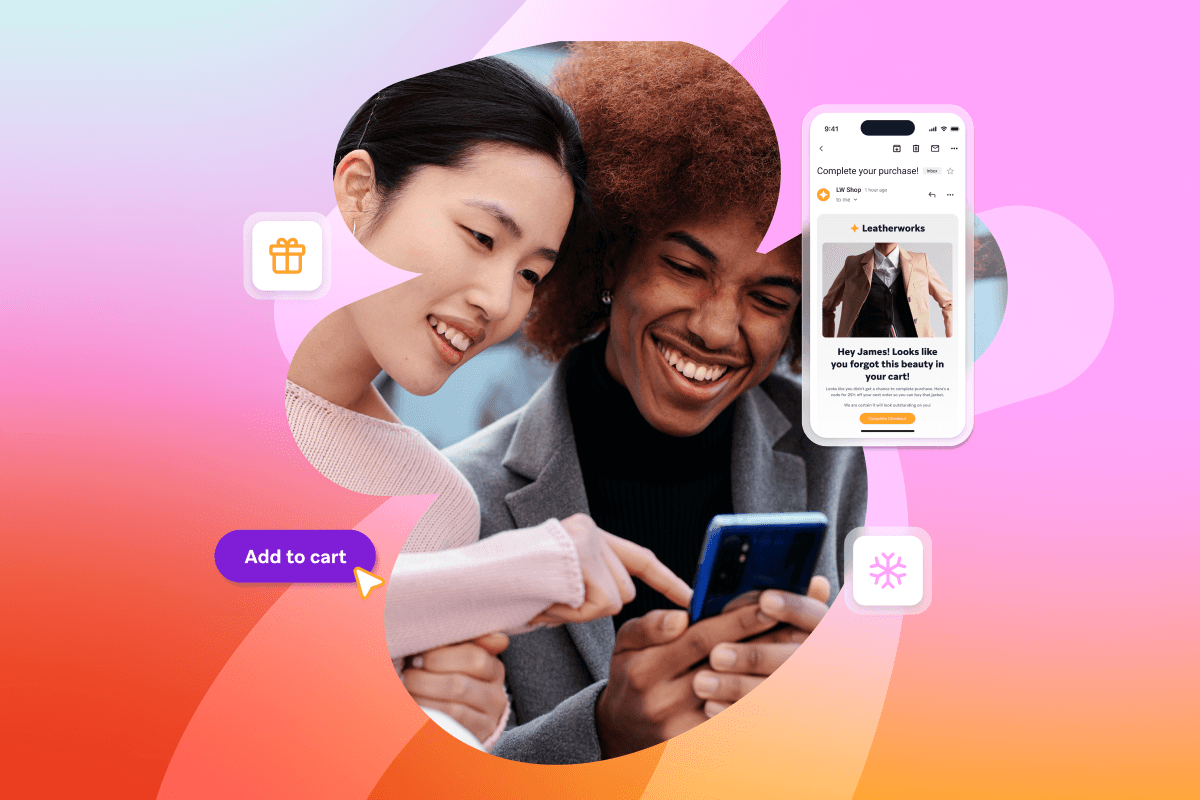Mobile Marketing: Know the Ins and Outs
Published on February 16, 2016/Last edited on February 16, 2016/5 min read


Team Braze
Push notifications, in-app messages, omnichannel campaigns, app retention…hold on. What does this stuff even mean and why is it important?
Mobile marketing isn’t the easiest thing to figure out—it’s a world of its own, with its own set of best practices and terminology. However, when done well, the payoff can be big, so becoming fully adept at mobile marketing is recommended for marketers looking for another way to reach their customers.
Luckily, we have a ton of knowledge about mobile (it’s in our DNA) that we’re willing to give away. We’ve written an ebook to answer common questions marketers ask when getting started with mobile. A truncated version of the first chapter of our “50 Mobile Marketing FAQs Answered” ebook is below. You can skip ahead and download the full version here.
The Most Essential #MobileMarketing Industry FAQs, Answered!
1) What is mobile marketing?
Mobile marketing is simply marketing on a mobile device (usually a mobile phone or tablet). Marketing has historically been all about in-person, TV, radio, email, and desktop web. Mobile marketing gives marketers the ability to reach customers through push notifications (for mobile apps and mobile web browsers) and in-app messages. With the growth of smartphone and tablet usage, marketing on mobile has become a necessity for marketers to adapt and grow their efforts.
2) What’s the difference between mobile marketing and mobile advertising?
Many marketers may find themselves confused about the difference (if there’s any difference at all) between the terms “mobile marketing” and “mobile advertising,” and understandably so.
Brands use mobile advertising to send marketing messages to virtually anyone using a mobile phone, but brands don’t have to have a mobile app to do so. Mobile ads are promoted on third-party apps and are used as an acquisition strategy. For example, a marketer who has a mobile site can target an ad to Android users in India, users the marketer may have no direct connection to. The ad—which could be a banner, native, or interactive ad—would appear on an app that allows ads to display from an ad network (think Google Display ads on a web browser).
What’s not considered mobile advertising is sending marketing messages inside your own properties to users with whom you’re already connected. You’re essentially re-engaging the users you already have to create loyal customers. All of this is done on your own app or site and through your own channels, like your email marketing list. At Appboy, we like to call this mobile engagement, a way to build long-term relationships with your existing customers.
3) How is mobile behavior different from desktop behavior?
Mobile has opened up a new world of possibilities for consumers and marketers. What was once solely done on the web is now increasingly being done on mobile devices more than desktop because of convenience and immediacy. This includes things like watching videos, listening to music, chatting with friends and family, reading news, browsing websites, sending emails, and other daily tasks.
Many companies have created apps to leverage this change. For example, people are way more likely to hail a taxi on-the-go than at home, which is why apps like Uber and Lyft are so popular. Apps like these make hailing transportation convenient and quick. Gone are the days of waving your arms like a mad person or dialing a taxi from home that takes hours to arrive.
Despite the growth of mobile usage, consumers are still more likely to complete a purchase on their desktops. This can be due to the fact that some websites haven’t fully optimized their site for mobile and don’t have a mobile app, or that consumers are more comfortable making important purchasing decisions on larger screens and fully functional websites.

4) Should I develop a native app or just focus on a mobile website?
Time spent in mobile apps has increased rapidly; however, people are still browsing mobile websites to look for answers. It would make sense to have an app if your product or service can be consumed via mobile devices and if you can provide enough utility to increase customer engagement and loyalty.
On the other hand, you may not need an app if it wouldn’t offer enough value to your customers or if it would be too expensive to develop and support. For example, if you sell mattresses, your customers are more inclined to interact with your brand in-person or on the web to make an informed purchase. The costs of developing an app might outweigh the benefits, and customers wouldn’t be able to engage with your brand in a way that’s useful.
If you decide to forgo a mobile app and focus on a mobile site, you have the option of creating a responsive site or a mobile-focused site. A responsive site is a site that shrinks and grows based on browser size. A mobile-focused site is a separate site that you create specifically for mobile devices.
All in all, evaluate what’s best for your business, but do remember that mobile is hot and it’s a medium that your customers probably live and breathe.
5) What types of companies are doing mobile marketing?
There are cutting-edge companies who live and breathe mobile (think about your favorite music streaming app or on-demand service), there are companies who are starting to venture out into mobile after years on desktop, and then there are large, risk-averse brands who are behind on the mobile trend. The only thing that is certain is that everyone can take advantage of engaging with customers on mobile devices.
Here’s what the rest of the first chapter covers:
- What is mobile marketing automation?
- How does mobile marketing help me create loyal users?
- What are long-term relationships in mobile marketing and why are they important?
- What is lifecycle marketing and does it apply to mobile?
- What are “mobile moments”?
To get answers to the rest of the questions in this chapter and 40 more mobile marketing questions, download our free ebook!
Be Absolutely Engaging.™
Sign up for regular updates from Braze.
Related Content
View the Blog
Holiday Email Deliverability: Tips and Tricks from Braze Experts

Team Braze

Destination Inbox: Navigating the Modern Landscape of Email Deliverability

Alison Gootee

Know Your Push: Understanding the Different Push Notification Devices and How to Use Each Effectively
